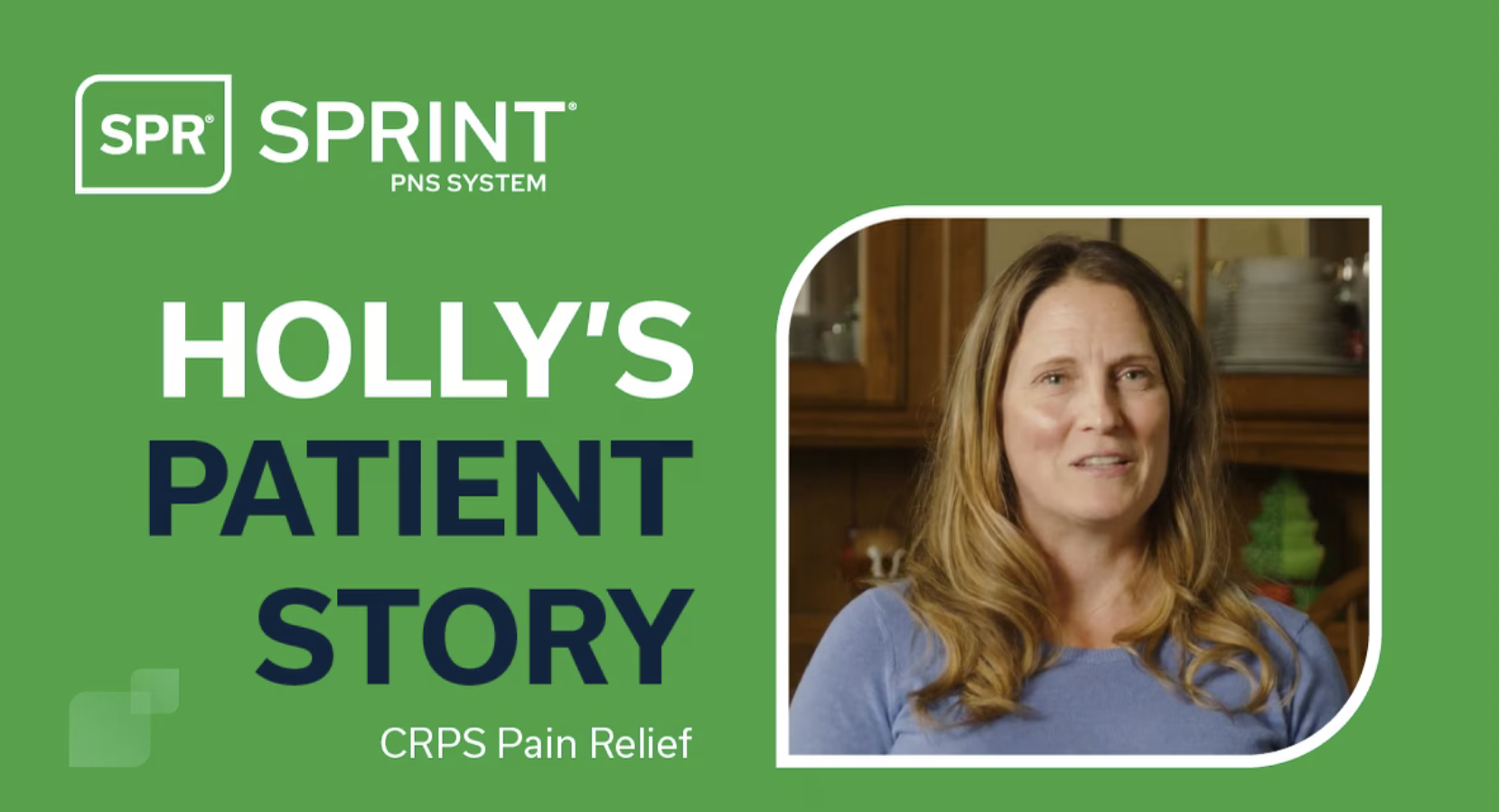CRPS
On a fall afternoon a few years ago, Holly was outside doing some yard work with her two daughters when she noticed a strange sensation: “I felt my right hand start to go numb, like pins and needles,” she recalls.
The sensation persisted, so Holly saw a physician who ordered an MRI because they suspected her symptoms were stemming from issues in her neck. The MRI, however, showed that the discs in Holly’s neck were fine.
“So, this sent me on a journey of endless lab work to figure out what was going on,” she says. At first, her care team thought it was a B-12 deficiency. While the vitamin injections helped; the relief didn’t last. Over time, the sensation turned into pain. It got to the point where Holly had difficulty using her hand, so she was sent to a neurologist who ran a series of tests, including another MRI, only to tell Holly he had no idea what was wrong.
Many more MRIs, no answers
She tried physical therapy, but the pain moved up to her wrist and she was diagnosed with carpal tunnel. Over time, the painful sensations traveled up to her elbow, then to her shoulder. Despite visiting multiple doctors and having a total of 13 MRIs, she still had no diagnosis to explain her painful symptoms. During this time, she also tried various medications, including Pregabalin, most of which made her groggy and made her feel like she was losing her memory.
With a useless arm and shoulder, Holly’s world became smaller. “I couldn’t grocery shop anymore. I went from being a very busy, active person doing whatever I wanted to sitting on the couch and watching TV because I couldn't do anything.” She became extremely sensitive to temperature changes and spent a lot of time under a weighted blanked by the fireplace. Even the simplest tasks, like cutting her food, required help from her husband and daughters. "It made me feel like a baby,” she admits.
“It got to the point where I couldn’t even sign my name. Everyday tasks like putting on shoes, cooking, driving, brushing my teeth — anything that required my hand — I was unable to do,” explained Holly. “I even had to give up driving.”
Finally, a diagnosis
Out of ideas, Holly’s neurologist referred her to a pain medicine specialist who finally pinpointed a diagnosis: Complex Regional Pain Syndrome (CRPS). CRPS is a condition in which inflammation and nerve damage causes painful sensations and sensitivity in the affected area.
Unfortunately for Holly, the pain medicine specialist told her that because it took so long between the onset of symptoms and the diagnosis, her treatment options were limited. He began by prescribing another round of physical therapy, more medications, and finally a series of three nerve blocks. While a few of the nerve blocks provided Holly some relief, it lasted only a couple of days.
A turning point
Holly’s response to the nerve blocks encouraged her pain medicine specialist to suggest trying the SPR® SPRINT® PNS System. SPRINT PNS is a 60-day treatment proposed to recondition the central nervous system for significant and sustained relief from chronic pain. When he explained how the treatment worked, Holly was hesitant at first. The idea of having leads placed in her body near her nerves was intimidating but soon agreed to it because she was willing to try anything that might help.
Holly’s insurance, however, was another matter. It took months of working with her insurance to obtain coverage for the SPRINT PNS treatment, so the SPRcare® Patient Access team worked closely with Holly and her pain medicine specialist’s team to facilitate obtaining coverage for the device. When Holly finally got the approval, she was ecstatic. A couple of weeks later, the doctor inserted the SPRINT PNS leads and Holly began treatment.
The Good Idea Fairy is back
Adjusting to the treatment took some time. Holly found that changing the bandages was uncomfortable because the CRPS caused the area to be extra sensitive, but the sensation diminished over time.
“We were walking at the beach, and I was fine,” she says. “I didn’t have it on for hours and didn’t realize it. It was then I thought, wow, this might have actually worked!”
And has it ever.
“It’s been a life-changer,” Holly says. “I have my life back! For years, my husband called me the ‘Good Idea Fairy’ because I would come up with all these ideas. And that came back. I didn’t realize how clouded my mind had become [from all the pain I was experiencing].”
Holly gets emotional thinking about all the things she can do again — things that once seemed impossible, like making brownies or carrying a backpack on a vacation. And decorating for Christmas, which was important to her before CRPS, has made a comeback: “It’s the first year I’ve been able to get everything out and do everything I wanted to,” marvels Holly. “I can do it all!”
